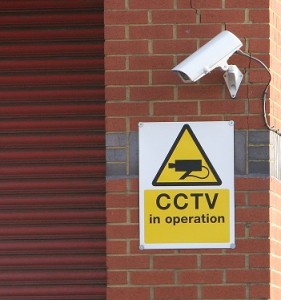School Security – where to draw the line?
As the number of “school shootings” started to rise, there was a rash effort to step up security in schools, and this was a phenomenon almost exclusive to the US up until but a couple of years ago. The reaction to those events was a natural one, and one that has come to be expected; stepping up security, using the methods that are available.
– Security checkpoints with metal detectors
– Security guards for patrol and as visible deterrent
– Camera surveillance
– “Panic buttons” for teachers and at select locations
School security, however, is a sensitive issue, and there are hard questions that needs to be asked.
– Can we deter future school shootings using security measures designed to fight the symptoms instead of the cause?
– Should young children be exposed to the harsh measures that have been put in place? (e.g. checkpoints and searches)
– How much of the responsibility must be placed with the caregivers instead of the public?
There are many more, and there’s too little room here to discuss them all, but all of the hard questions need to be asked.
What is the goal?

Protecting the children is important, that is obvious. However, the unhealthy shielding of today’s children has undoubtably led to a generation that is less able to take care of itself than the ones who grew up during the 50’s to the 80’s. Massive amounts of legislation and regulations, both in Europe and the US has made even the simplest of playground installations into a nightmare of paperwork, permits and specialist builders. Schools are prosecuting students for alleged “crimes” (to the general ridicule of the rest of the world, by the way) and parents are dragging school districts into court when their children have suffered some kind of real or perceived injury. We put helmets on their heads and we won’t let them climb trees anymore. And God forbid they should get in a fight with that bully down the street – we’ll sue that little shit’s parents for everything they’ve got, and take the kid to the doctor if he or she so much as gets a scrape on the knee from the debacle. Remember to bring the camera, honey! We need documentation!
Protecting the children is important, but some day, they will need to enter the real world, the world beyond school and playgrounds, grades and sheltered classrooms, and find their way on their own. The question is, how do we want them to face that “real” world? As frightened little children still, or individuals capable of managing on their own? The right answer, of course, is the latter.
So, the goal when planning and executing school security measures must be to balance those measures in a way that will allow the children to develop in a natural environment where they can relate to other people in a natural way, while we still try to reduce the risk of “something bad” happening. But how do we do that?
Risk Assessment
Risk assessment is a tried and true tool that any security professional has experience with. Even if you’re just a security officer starting out, you have experience with those. Your order book is built on one (or more) of them, and so is your training. As time goes by, you’ll probably get to the point where you have to make one yourself – small or large, for your own home or somewhere you’re working.
Risk assessing schools is, basically, no different than doing it anywhere else. There are a variety of factors you need to take into account, both in regards to the physical location and the people who will be using or frequenting that location. Schools are like any other public building – it’s just that; open to the public. Even a private school will be a public place, since schools, after all, aren’t prisons. We can’t lock our kids in while they’re in school – that should be obvious. What we can do, however, is to try and build a picture of the risks that exist in the public space.
Intruders, criminals, sociopaths and psychopaths, “misfits” and disgruntled employees, madmen (or -women) and gunmen and sexual predators, kidnappers and hijackers (yes, it’s possible to hijack a school), hostage scenarios and bombs, bullies and fugitives… and the list goes on. So how do we counter those things?
Guards, surveillance, cameras, metal detetors, bag checks, regulations and rules, locker searches, fences and gates. We treat the symptoms instead of the cause, which clearly lies both within the schools and in the homes of the pupils that commit school shootings, which seems to be the greatest cause of ramped-up security these days.
Some recent examples:
In February 2008 a gunman opened fire in a lecture hall at Northern Illinois University, killing five students and wounding 21.
Soon after, state lawmakers tried to make sure colleges and universities were prepared to respond to such an emergency.
They passed a law requiring them to create and practice detailed plans to prevent violence and manage emergencies by January 2009.
—
The NYPD is adding extra security patrols in front of Jewish schools and community centers after a gunman overseas targeted children entering a religious school.
NYPD officials said there is no specific threat in New York, but there is always a concern of possible copycat or lone-wolf attacks here.
—
It’s been less than a month since a fatal shooting occurred at Chardon High School, near Cleveland. Even more recently, Pittsburghers were shocked by a tragedy closer to home, when a shooter opened fire at Western Psych in Oakland.
With the severity of these events in mind,Keystone Oaks School District officials are working to ensure that security measures are in place constantly, and are updated constantly, to prevent a similar tragedy from happening in our own neighborhoods. (Keystone Oaks)
– Can we really deter future shootings using metal detectors and security checkpoints? Probably not. No one knows better how to sneak things into schools than the students, and after all, an airport model security setup isn’t really feasable, or desirable.
– Should young children be exposed to the harsh security measures that have already been put in place? Probably not. Instead of creating an environment of trust and cooperation, an atmosphere of distrust and a lesson that anyone can be a suspect instead of a part of “the team” is hammered into young minds. Which, most will agree, is far from ideal.
– How much of the responsibility for these incidents should be placed on the caregivers/parents? The answer to that one is hard, but it’s probably in the neighborhood of “most or all of it”. After all, raising children to be a healthy part of society must be the parents’ responsibility, and if they aren’t up to the task, then that child needs, perhaps, to be “assigned” new parents. Young minds are shaped early, and while there will always be individuals that have troubles no one could have foreseen or prevented, parents are also the first persons who should have noticed that something or other was off. Blaming society is never a valid defense.
So what should we do?
“1984” is not a good option. We should all agree on that at once. Schools and other places where children and young people gather should be safe places, but they should be made such by growing a healthy resilience in the users, not by treating them all like ticking time bombs, which is what we’re currently doing.
A thorough risk assessment, a feasable plan, cooperation between students and pupils and faculty, and major parental support and involvement should be prioritized, instead of uniforms, metal detectors and searches. That, however, will be a pipe dream as long as parents keep pushing responsibility for their offspring over onto the public, and the schools in particular.
